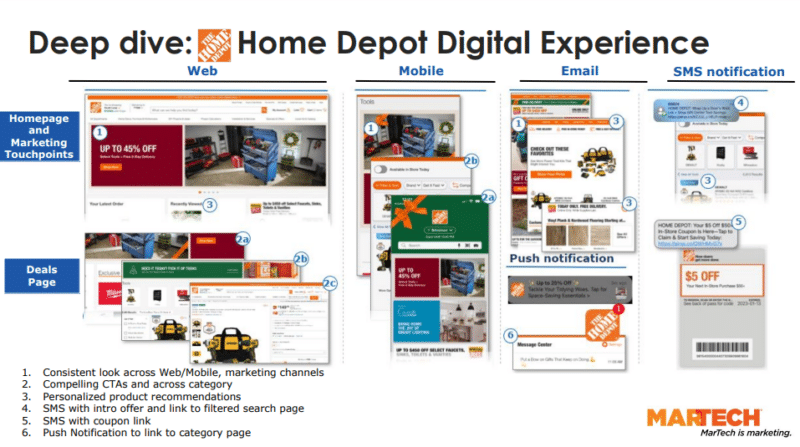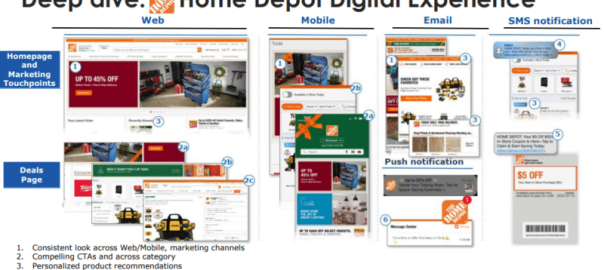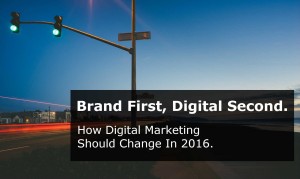Here’s how to approach the task of improving your brand’s digital experience and driving more revenue.
Improving your brand’s digital experience can be a significant driver in adding and retaining customers and increasing revenue. To do that, it’s important to evaluate how customers interact with your brand and where digital channels fit in the buying cycle. That will let you find the gaps in experience and determine the best martech tools and internal architecture to deal with them.
Here’s a rundown of steps all businesses should take to improve their digital experience.
1: Assess your current digital experience
“To build out a best-in-class digital experience, first you understand your buyers’ needs and their challenges,” said Alp Mimaroglu, director of marketing for wholesale food distributor Sysco, at The MarTech Conference.
Some purchases are entirely digital, while others require sales agents and offline engagement with the customer. Determine the role that digital experience plays to meet the needs of your customer throughout their journey.
While B2B purchases tend to be more hands-on with live sales teams, some B2B purchases can be entirely digital. For example, a restaurant chain might purchase tinfoil or other basic materials for their stores in a digital self-service way. They might buy some and test it themselves first before making a bigger purchase for the business.
“[This example] only needs digital touchpoints for the customer to purchase,” Mimaroglu said. “They don’t need sales intervention, they don’t need offline, they don’t need a demo. They’ll buy just based on email, web, a deal, or a recommendation.”
However, there are other purchases that might require a mix of digital experience and live engagement with sales. For instance, a customer might require a demo or an in-person sales call.
To get an idea of the full extent of digital and offline engagement, Mimaroglu recommends shadowing a new or experienced member of the sales team.
Gaining knowledge from the field and seeing how customers interact with your company’s digital touchpoints will help you identify key areas of improvement in the short term and lay the groundwork for longer-term wins.
2: Map out your brand’s digital touchpoints
Identify key stages in the customer journey with the goal of building a consistent digital experience across the entire customer lifecycle.
New customers. This stage of the customer journey depends on if it’s a net new customer or a customer coming over to your company from a competitor.
“If it’s a net new customer not coming from a competitor, you’re going to have more time to get it right with this customer,” Mimaroglu said. “But if they’re coming from a competitor, your time is compressed, especially when there’s no contract because they’ll churn quickly.”
Purchases. Make sure that in this stage of the journey, the digital experience includes the right recommendations for your customer, as well as an easy-to-use ecommerce platform, if that applies.
Retention. For existing customers, are there enough promotions and other calls to action to keep them buying? Are there places online where they can get service, or ask to be connected to a live sales or service rep? These are opportunities in the experience for your company to drive revenue, while also keeping the customer from turning to a competitor.
Here’s an example of all the different digital touchpoints Home Depot uses, organized by channels.

Another important consideration when mapping the digital experience is to determine which touchpoints should be using personalization. Your martech stack and internal architecture discussed later, will make it possible for you to deliver this personalization at the touchpoints you choose.
3: Locate gaps in the digital experience
“To find the gaps in the customer experience…first you need to start from what you can directly manage — resources, headcount, vendors,” said Mimaroglu. “That’s usually a good starting point for quick wins.”
Do you have the right teams and budget in place? Are you able to begin looking for new martech solutions to improve your digital experience? Most importantly, are the tools and resources you already have being used?
After assessing the internal resources your company already uses, you can move onto longer-term opportunities like cross-functional alignments, cross-channel orchestration and partnering across teams to drive a consistent experience, according to Mimaroglu.
Longer-range planning across IT and engineering will help identify capabilities you’ve never done before, as well as capabilities you want to improve.
4: Building and improving your martech stack
Improving your martech stack doesn’t necessarily include chasing a single solution or “shiny object,” Mimaroglu warned.
“Sure, there’s many marketing technologies you can buy that can improve your digital experience, but if you’re not using your current martech stack properly, the digital experience won’t be fully optimized,” he said.
Organizations should weigh the time and effort of purchasing and implementing a new solution, especially if it’s cross-functional and requires other teams to adopt and coordinate its use.
Instead, begin with strategy — what benefits and goals come out of an improvement in a digital experience? Then seek out tech solutions that help you reach those goals.
In the longer run, work with IT and engineering to find out the technical requirements of longer-term capabilities. For instance, maybe your company doesn’t have a one-stop ecommerce solution. Communicate internally to build a martech roadmap to reach that goal.
Above all, don’t let the roadmap be guided by a martech vendor or consultant, Mimaroglu cautioned. The martech road should be laid out by your organization.
“You need to think strategically before just purchasing tools and build your team of experts internally so you’re making the right purchases for your martech stack,” he said.
5: Execute with end-to-end architecture
In order to build out the best digital experience, you need to have the right end-to-end architecture that supports all of the touchpoints and makes the experience consistent.
It’s not just about what the martech tools in the stack do, but how everything is connected at your organization.
“How does the data architecture work?” Mimaroglu asked. “How are the integrations? How’s the wiring? How am I going to do cross-channel orchestration? How do I want to personalize?
He added, “Otherwise there will be disconnects and gaps as the customers are touched across different teams and different applications. So the end-to-end architecture enables the best-in-class digital experience.”
The post 5 steps to evaluating your digital experience appeared first on MarTech.
(9)








